Today, consumers of online digital platforms demand consistency of content, easy accessibility of websites from different devices, user-friendly setup, speed, and quick response. But reaching that level of consistency to maintain various websites would require a huge team, high budget, and painstaking efforts to keep their content consistent.
Deliveroo, an online food delivery company, experienced something similar. They witnessed a huge demand for service in the European market. It operates not just in Europe but also in more than 200 locations across various countries. However, keeping up with separate site management and user experience were two crucial challenges.
To centralize their global experience and improve site management, the online delivery company adopted a multi-site management system to facilitate the user onboarding experiences and allow personalized content for targeted segments.
Multi-site management is known for answering the calls of business holders with the wish of expanding their business, attracting new consumers, or even increasing market penetration. While it comes with its challenges, it is a new promise to reach more consumers locally and globally, given that it is utilised in the proper manner.
What is Multi-Site Management?
Multi-site management is used as a strategy that you could use to manage websites, microsites, single-page applications, landing pages, and more through a single platform. It means that the developer can utilize a single user-centric platform to develop several individual websites with its unique features and elements.
The backend of the multi-site management system can be considered as the central unit, giving complete content management authority to the users. Here, a single user interface allows the user to manage individual websites and their domains simultaneously.
Considering that each site’s front end is distinct and unique, meant for appealing to the customer’s user experience, these sites are distinguished by their domain name. Through a DNS, each domain is mapped and accessed by the site manager for its content management.
The architecture of a multi-site management system omits duplicating efforts to create the content of each site separately. The approach lessens the pressure of recruiting a large team for managing each site and reduces the developers’ cost and time.
Prime Features of Multi-Site Management
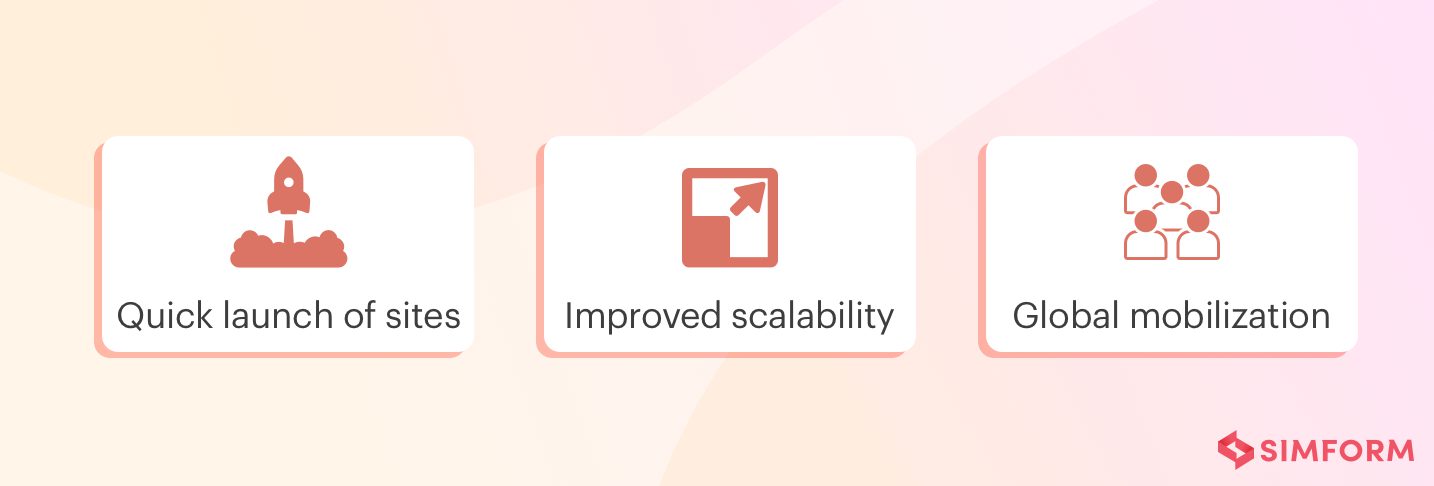
Multi-site management offers various options for customization and control. Here are some of the key features that make it unique –
- Quick Launching of Sites
You can launch content-specific websites quickly from your existing sites without additional duplicating efforts. Configurations and modules can be customized and accessed individually based on the content you want to share. Since content specific to the site is readily available, it reduces the redundancy in infrastructure to recreate content from scratch and saving time required to launch the site.
- Improved Scalability
Multi-site operations management makes scalability easy – be it expanding sites or growing digital presence across the globe. In fact, you get to use a single platform to track site performance, manage high-network load, and host websites with a single codebase, along with increased speed for deployment updates. This way, you save time managing servers and decrease maintenance costs.
- Global Mobilization
A single point of development with one codebase creates opportunities to host sites for multiple brands simultaneously with tailored content. Using the same codebase improves the code quality, organizes code structure, and consumes less time. This, in return, provides necessary accessibility for site customization and personalization.
Use Cases of Multi-Site Management
Let’s check out some use cases to understand how a multi-site management system works:
- Organizations Overseeing Multiple Brands
Although overseeing multiple brands can be done through a diverse development team, it may not be the most cost and time-effective for your organization. Moreover, with diverse products and target consumer segments, a single website is not enough to reach a wider demographic. Therefore, a multi-site management system reduces the time, cost, and effort to manage and develop several sites simultaneously.
For instance, Kao Corporation witnessed a 20% rate of quicker updates and localization after embracing a multi-site management system. It provided smooth management, delivery, and maintenance to approximately 250 websites and more than 500,000 digital assets owned by the company.
- International Organizations
International organizations often face the challenges of maintaining a regional team, systems, sites, products, and even services for specific consumers. Multi-site business offers low-cost digital asset management with a globally distributed web architecture. This approach enables teams to focus on regional-specific target consumers, content, SEO-based promotions, marketing trends, product and service categorization.
In an effort to increase market penetration into China, Oriflame made use of a multi-site management system to create a range of digital sites. Along with its existing website, it launched a mobile application and integrated it with AliPay and WeChat. This allowed the developers to create customized and personalized content for regional consumers.
- Organizations Maintaining Microsites and Campaigns
With multiple client bases and brands, processing each site requires a faster management approach in organizations that oversees microsites and campaigns. Multi-site management allows you to manage and handle separate microsites and their campaigns economically. As a result, you receive greater investment returns.
MasterControl remodeled its backend and frontend user experience, modernized the localized websites, and shifted to a content-based platform through a multi-site management system. With a digital asset of over 3,000 web pages, it developed a quick and modern website with widgets and themes, resulting in a 47% rise on its homepage.
Multi-Site Management: Adopting a Headless CMS
Content Management System is a software platform that allows you to create content, manage, modify, collaborate and publish it over the internet. CMS does not require developers to create websites through HTML or CSS codes. Since it’s easy to use and can be quickly built, it allows you to focus more on content activities, website analytics, and maintaining customer satisfaction.
The content management system is made up of two core elements –
- A Content Management Application that manages anything that is being typed, added as graphics, or anything that could consist of the site content.
- A Content Delivery Application that stores the content saved in the CMA and makes it visible to the visitors of the website.
Amongst the variants of a CMS, two of those are most commonly used – the traditional or couples CMS and the headless CMS. The traditional CMS architecture has the frontend and backend coupled together, which means that the content stored and edited in the backend is bound by the same system that delivers the frontend content. On the other hand, the headless CMS does not have a frontend and is designed explicitly for content-focused users.
Some of these variants include traditional or coupled CMS, decoupled CMS, and headless CMS. Some popular CMS examples are Strapi, WordPress, Wix, Contentful, Drupal, Joomla, and Magento, amongst others.
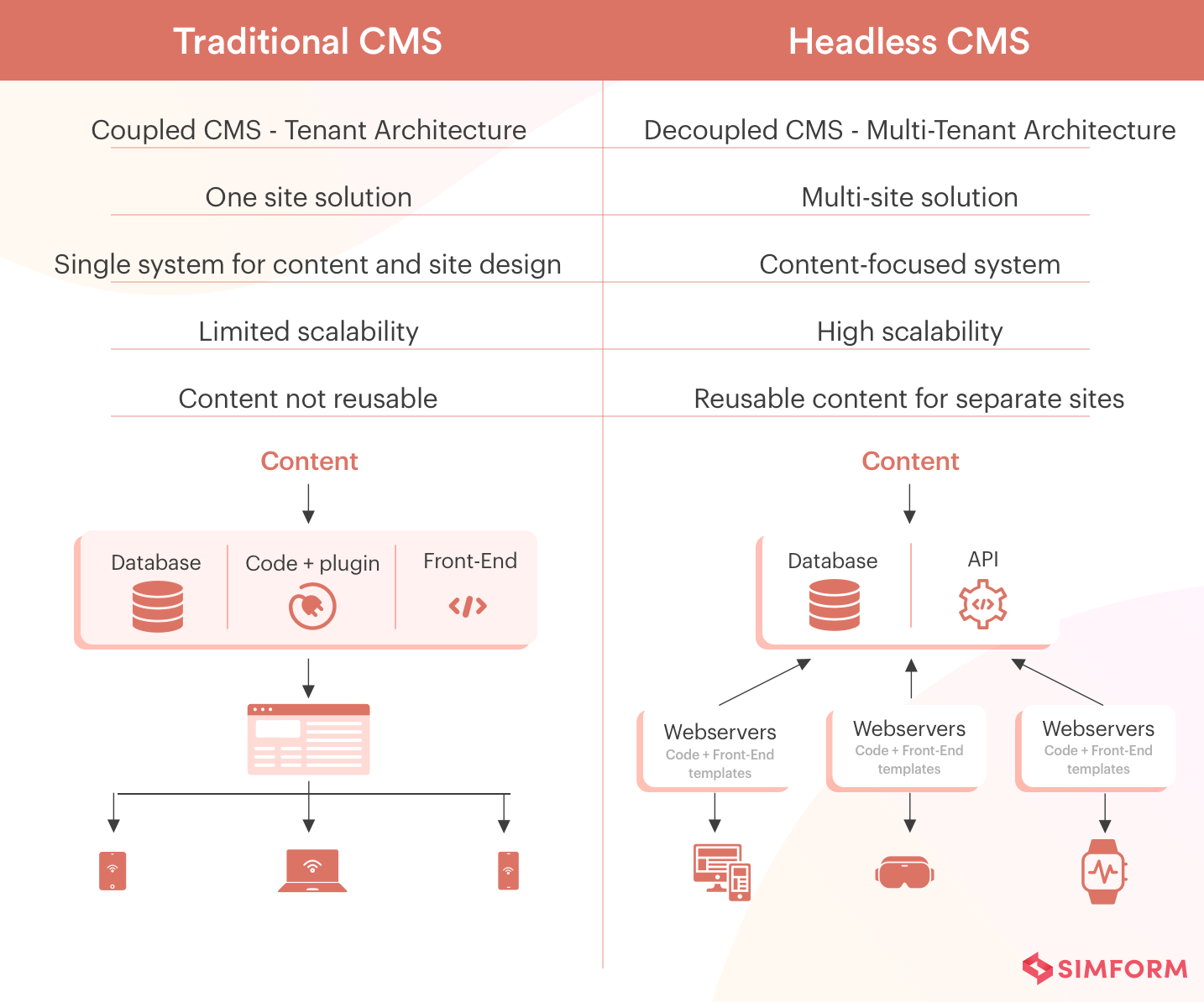
Why Move to a Headless CMS?
Contrary to the monolithic system of the traditional CMS, the headless CMS does not have a frontend system for publishing. Being a variant of a decoupled CMS, your content managers can write and store their content at the backend and have the flexibility to publish content over a website, mobile app, smartwatch, TV, or other devices. The transmission of the content over different platforms is done through an API. Since there is no impact on the frontend, you end up enhancing your site’s user experience without affecting the content.
Headless CMS is a gem that has eased multi website management problems for organizations that have decided to expand their digital presence. It has proved to be a fine tool for maintaining consistency and focus on high-value content on multiple platforms.
Let us dive into the benefits of a headless CMS and how it serves to be an ideal tool for multi-site management.
- Command Center:
A headless CMS serves as a ‘command center’ for multi-site management. The division of the backend content management space gives greater autonomy for editing and changes to manage multiple websites.
- Scalable:
The reusability of content from the backend gives endless possibilities for publication over various new platforms or devices connected to the internet. Now isn’t that a dream come true?
- Eliminating Double Efforts:
A headless CMS is devoid of the “head”, i.e., frontend, and its emphasis is over the content. This eliminates the additional effort your developers have to make for publishing the same content over various sites.
- Affordable:
The multi-tenant architectural system of a headless CMS reduces the cost of maintaining multiple sites. If you have similar content and separate sites for your product, opting for a headless architecture proves to be economical.
- Work Distribution:
Being a frontend agnostic and content-specific tool means that the content managers can specifically focus on the content model. The frontend design schemas and digital experiences can be customized and personalized by frontend developers, depending on the site.
- Content First:
The headless CMS is a content-first tool, which means that your content managers first get to decide on a content model. Later, the website or application can be designed around the content instead of fitting the content over the template presentation.
- API:
A headless CMS works as an API that interacts with multisite resources. This system allows the backend content to be shared on different sites simultaneously instead of re-creating the content around the application.
- Quick Marketing Solution:
A headless CMS offers marketers and managers the opportunity to convert leads quickly through several sites. A headless CMS allows greater optimization in SEO or promotions since each site would adopt a distinct marketing approach.
- Flexible Management:
A frontend agnostic also means that whatever coding for development or maintenance is done on the site won’t impact the content. This gives better analytical results of the digital platform, allowing your developers to constantly maintain the server load, views, and traffic of multiple sites separately.
- Long-Term Security:
The content stored at the backend of a headless CMS provides long-term security for the brand. In the long run, if you plan to change your application platform or site, you can easily migrate to a headless platform without affecting or rewriting the content.
Case Example:
Federation Internationale de Hockey is the international governing body of hockey. Before Hockey World Cup 2018, FIH decided to improve their web experience for their visitors and allow sizable traffic management on the site. It was a grand initiative since the governing body wanted to strengthen its digital presence.
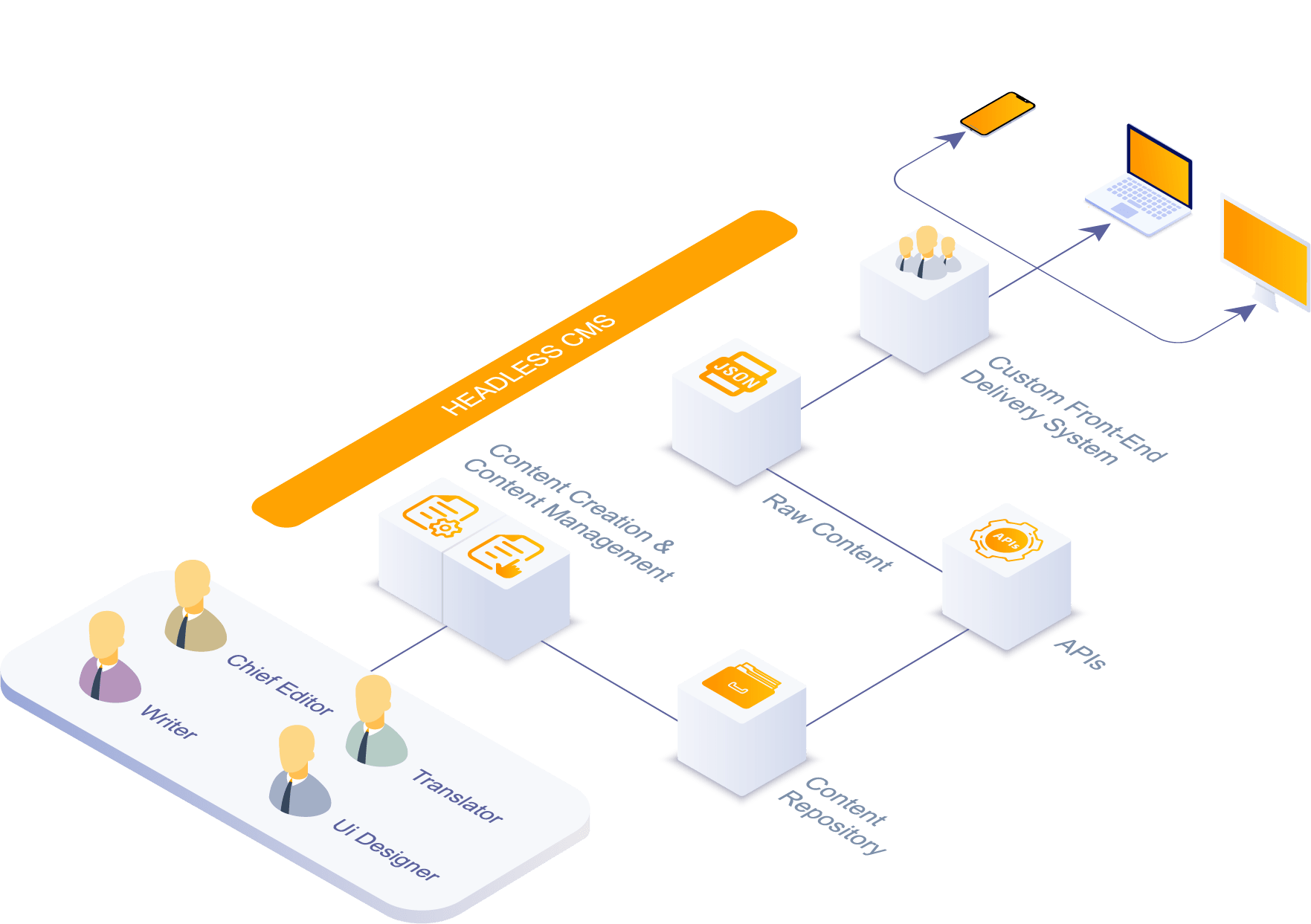
As a part of the initiative, the web developers at Simform transformed the site by migrating from an Enterprise Web Content Management (EWCM) to a Headless CMS. This allowed the frontend developers to focus on the web experience and not affect the content of the website. This migration not only reduced the vendor dependency but also eliminated the licensing cost of EWCM. As a result, the website witnessed more than 3 million users from Asia and more from global viewers.
List of Recommended Headless CMS for Multisite Management
Migrating to a headless CMS platform is a start of a revolutionary evolution if you desire to grow in the modern digital media world. Here is a recommended list of some of the most popularly used headless content management systems for content managers to use for their next project.
1. Strapi
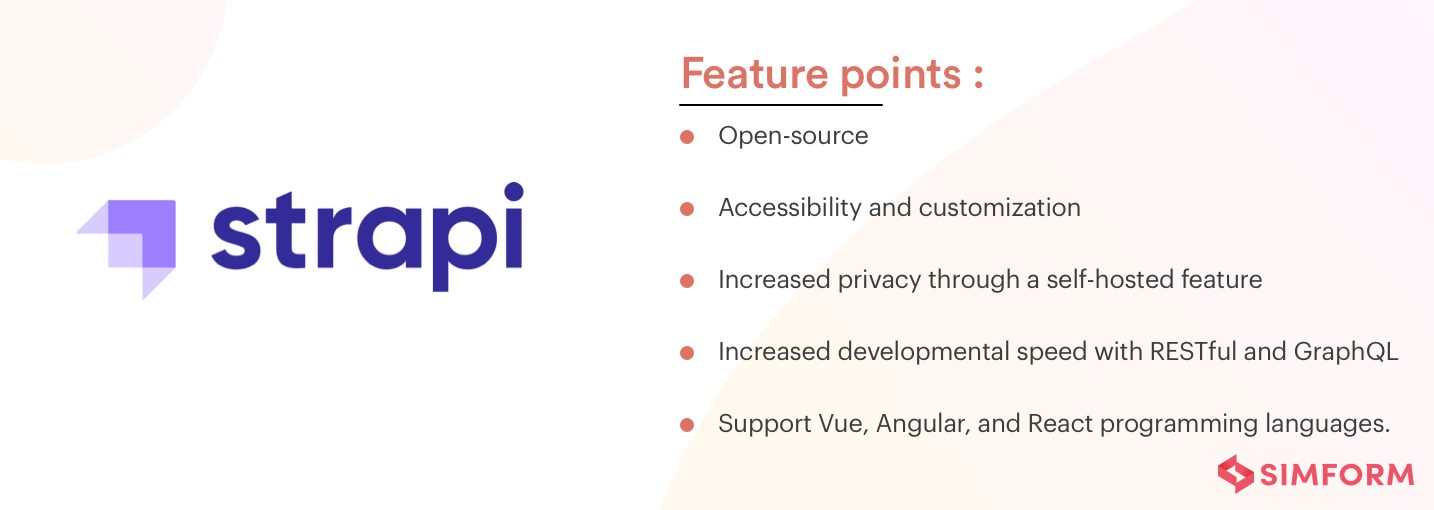
Amongst the open-source headless CMS platforms, Strapi is one of the most preferred content management systems amongst developers. Strapi is built on JavaScript, which makes APIs faster and eases customizing content.
The fundamental features of Strapi are what makes it superior to other headless CMS –
- Open-source CMS with codebase accessible on GitHub.
- Greater accessibility for customization of admin panels and APIs.
- Faster development with RESTful and GraphQL APIs, using frameworks like Vue, React, and Angular.
- Provides more data privacy for developers and brands through its self-hosted feature.
2. Contentful
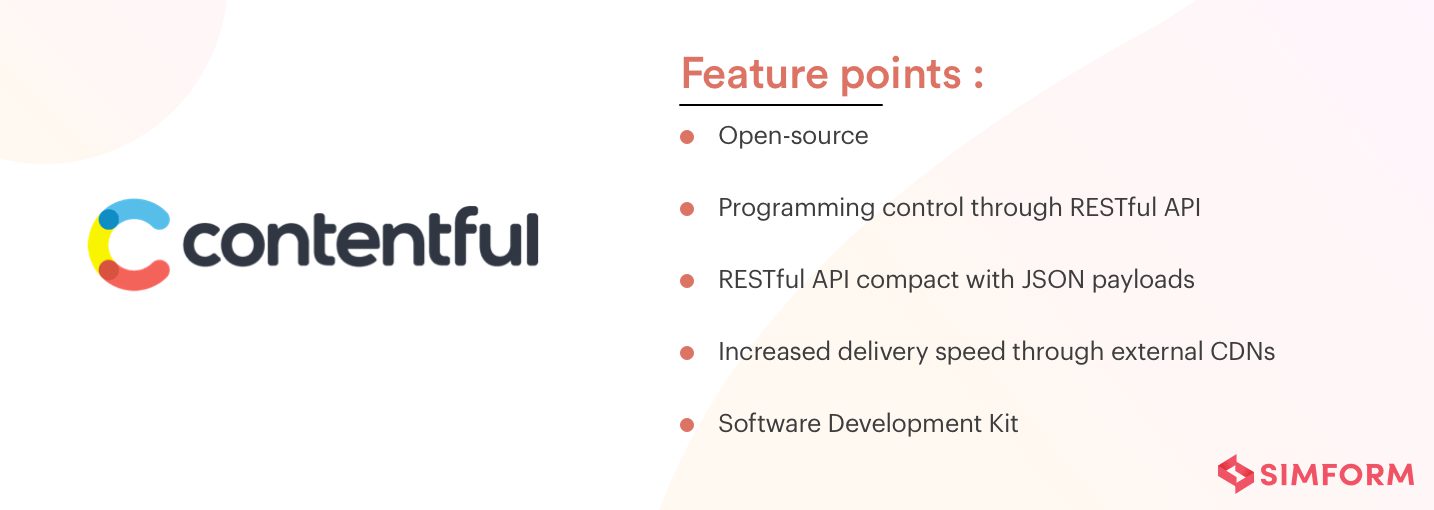
Contentful is an excellent solution for those who want to move away from a traditional CMS for better multi-site management. It uses an API-first approach, making it a successful content-based platform for the modern tech stack.
The key component of Contentful makes it an agile developmental tool for digital platforms –
- Provides programming control through its RESTful API that is compact with JSON payloads.
- Offers decoupled and microservices architecture, making it a content-focused platform for sharing over multiple sites.
- Advanced caching technologies with external CDN give greater delivery speed through its API payload.
- Provides a Software Development Kit for most of the popular developing languages for better multi-site management.
- Provides open-source components for its applications, web editor interface, and design system for better developmental support.
3. Agility CMS
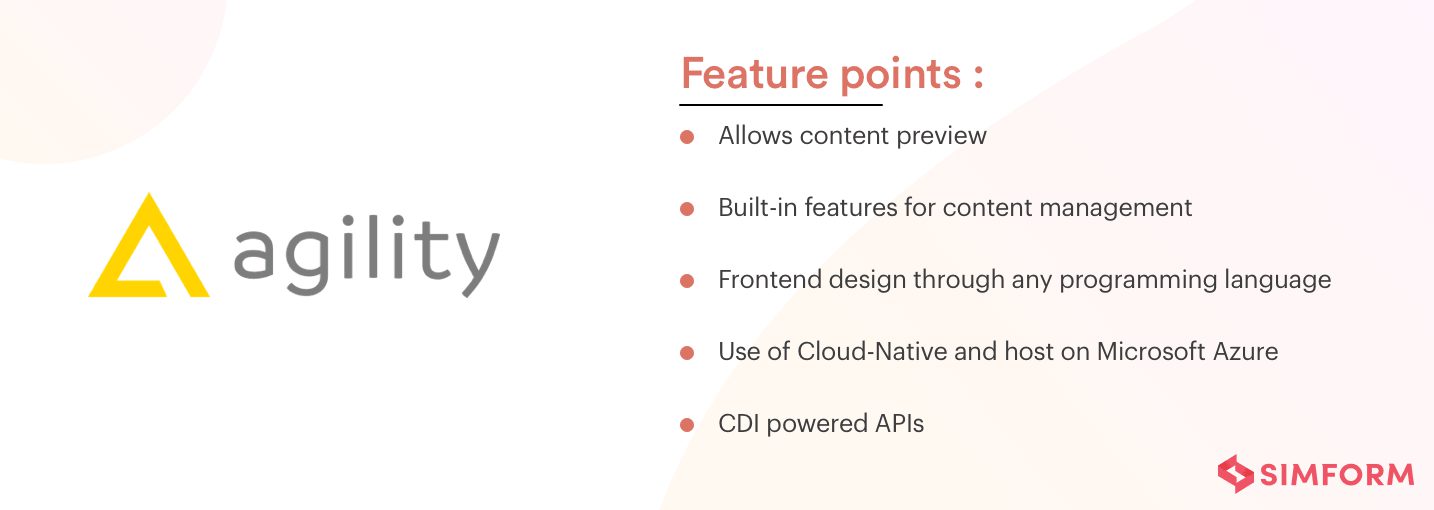
Agility CMS provides double features that include marketing features for content management and developer features for frontend development. The CMS platform provides an agile framework for teamwork and eases multi-site management.
The key features of Agility CMS comprise the best for the content manager and the frontend developer.
- Along with providing the features of a headless CMS, Agility CMS has the option of content management and preview on each site.
- The decoupled architecture provides a backend store for all content that can be reused for multiple sites.
- Various built-in features within the best multisite CMS platform provide speed and cost-effective approaches for content publishing and management.
- Being an API-first platform, it gives developers the autonomy to build frontend designs using any programming language of their choice.
- Increased performance, security, and scalable opportunities are provided through its Cloud-Native, host on Microsoft-Azure, and CDI powered APIs.
4. Ghost
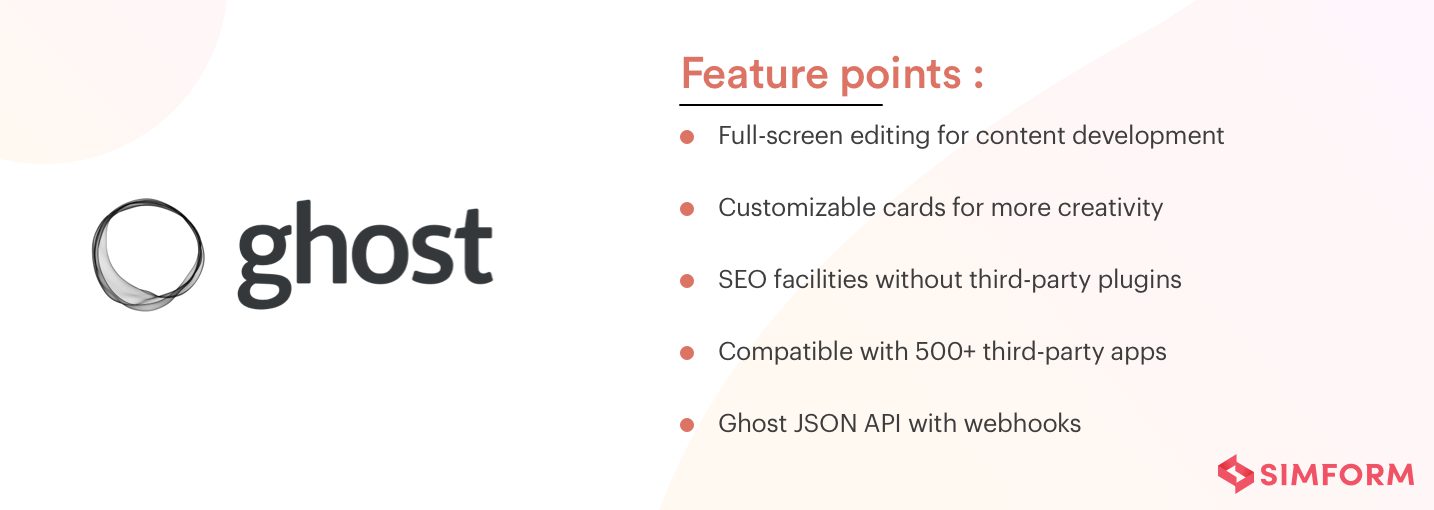
Ghost has created a revolutionary development within the headless CMS platforms which has a growing number of independent creators. While the target audience seems to be independent developers, the platforms’ unique and unbeatable features have even attracted organizations to utilize the platform.
Amongst its exhaustive list of features, the significant ones have been listed below –
- Ghost’s multi-site management features allow users to edit, customize, and manage content over various digital platforms and schedule it as per their needs.
- Ghost focuses explicitly on its content-first platform, allowing features like full-screen editing and customizable cards for more creativity.
- Ghost provides SEO capabilities to its content managers without the requirement of any third-party plugins for adapting to quality marketing approaches.
- The platform is compatible with over 500+ third-party apps that allow robust automation and superior workflow.
- Ghost provides custom integration opportunities by giving complete control of the frontend, coupled with Ghost JSON API and webhooks.
5. Kontent
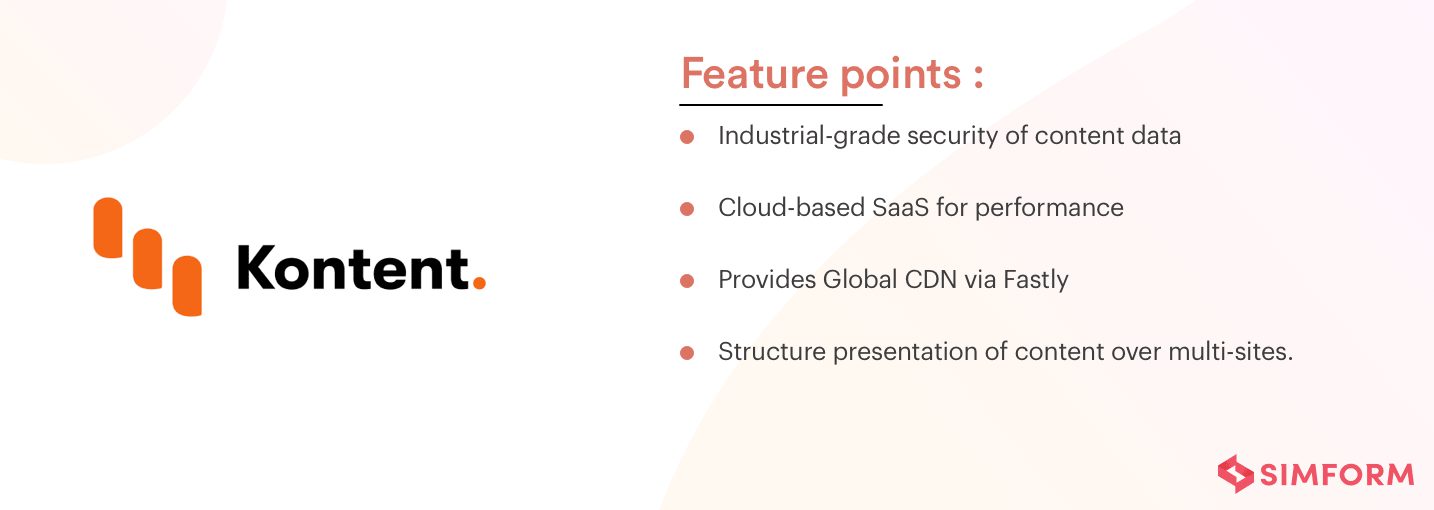
Kontent is a cloud-native headless CMS platform that is a part of the Kentico digital products. Kontent offers content as a service to its users, which empowered organizations to grow their content-based services on multiple sites. It is user-friendly for both content managers and frontend developers for customizing the digital experience of their clients.
The essential elemental features of Kontent provide multiple advantages for its users –
- Provides industrial-grade security of the content data and allows expansion through its scalable optimization, making it flawless for large data management.
- Kontent users have given positive feedback about its multi-site management facilities, allowing multichannel content delivery in a structured presentation.
- The CMS platform functions as a Cloud-based SaaS that offers outstanding performance results in storing content and maintaining traffic.
- Kontent offers a global CDN via Fastly, which offers fast content delivery services on CMS for multiple sites and improves site performance.
The Future of Multi-Site Management
With an increasing rate of ownership of digital devices globally, it is natural to assume that the future of content would be driven by speed and consistency. Multi-site management, along with the use of a headless CMS, would command the future of the digital experience on a global scale.
The headless CMS has left its mark on the future evolution of technological services. It has become possible because of its endless scalability opportunities, improved speed, and autonomy for content managers and developers simultaneously.
Executing a seamless headless integration is crucial, and this is where development experts come to your service. Simform shares technology partnerships with Strapi and Contentful for providing solutions for integrating headless CMS solutions for startups or enterprises.
Expand your team by hiring experts in the area and witness the change that leads to growth amongst the competitors.